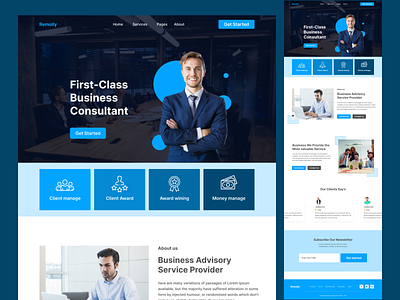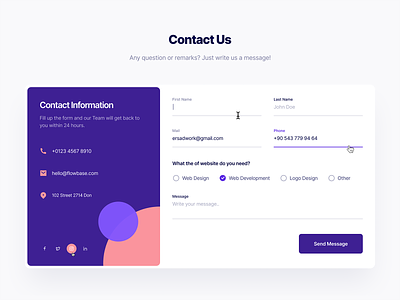
Website's adaptability across various devices, providing user experience on desktops, tablets, and mobiles.
Easy-to-use menus and navigation elements facilitating quick access to essential information and services.
Visible contact details and strategically placed CTAs encouraging visitors to engage or inquire about services.
Optimized content, meta tags, and structure to enhance visibility on search engines, with online discoverability.
Initial discussion and planning phase where client requirements, goals, and project scope are identified.
Creation of the website layout, structure, and features according to the agreed-upon specifications.
Development or incorporation of relevant content, images, and multimedia elements to populate the website.
Thorough testing of the website for functionality, usability, and responsiveness before launch, followed by ongoing maintenance to ensure optimal performance.
A business website provides a gateway to a global audience, transcending geographical limitations and enabling access to potential customers worldwide. It serves as a 24/7 online storefront, allowing businesses to showcase products, services, and information at any time, reaching diverse audiences irrespective of their location. This expanded reach opens new markets and opportunities, fostering business growth and market expansion beyond local boundaries.


Establishing an online presence through a professional website enhances a business’s credibility and brand image. A well-designed and informative website creates a positive first impression, instilling trust and confidence in potential customers. It offers a platform to showcase expertise, testimonials, client success stories, and industry affiliations, reinforcing the brand’s authority and reliability within the market.
A website serves as a powerful marketing tool, facilitating various promotional strategies to engage and attract customers. It enables businesses to implement digital marketing campaigns, including SEO, content marketing, social media integration, and email marketing. Through engaging content, interactive features, and targeted communication, a website fosters meaningful customer engagement, encouraging interactions and driving conversions.


A website streamlines customer service by providing valuable resources, FAQs, contact forms, and live chat functionalities, enhancing accessibility and responsiveness to customer inquiries. It offers convenience for customers to find information, make inquiries, or purchase products/services at their convenience, improving overall satisfaction and retention rates. Additionally, features like online booking, order tracking, and self-service portals enhance the overall customer experience, fostering loyalty and repeat business.